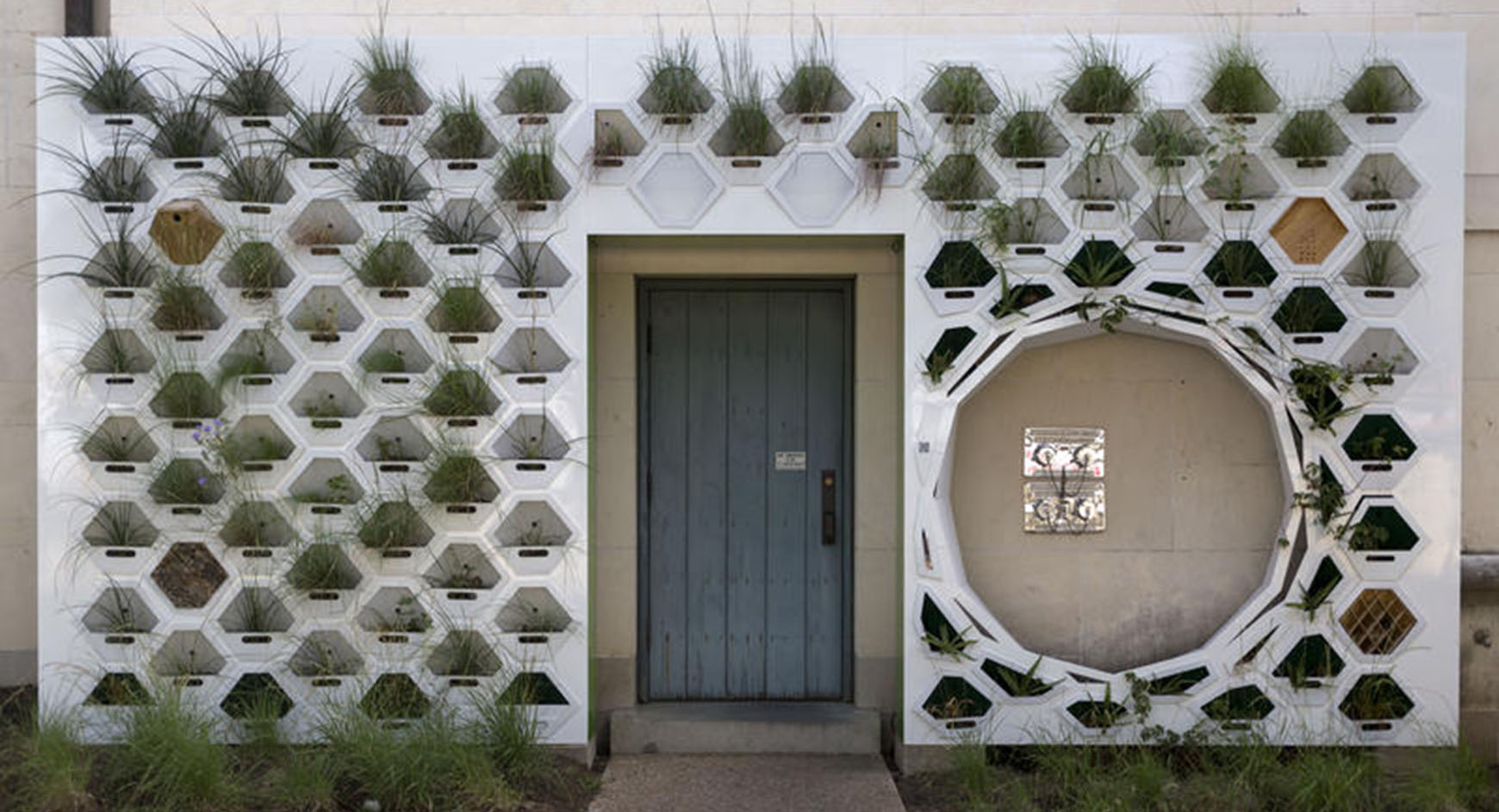The completion of the Living Wall at UT Austin is truly a dream that became a reality. Michelle Bright, an environmental designer for the Lady Bird Johnson Wildflower Center, helped me understand the significance of this project that not only promotes beauty but also offers experimentation and research opportunities. She is a tireless ambassador who speaks passionately about the process of designing and building the Living Wall on the side of Goldsmith Hall.
This remarkable project was over five years in the making. Assistant professor of architecture Danielle Briscoe led the project along with ecologists from the Lady Bird Johnson Wildflower Center. The team of collaborators also included researchers from labs across campus and individuals from UT Austin’s Landscape Services.
Creating a Living Wall on Campus
For over 12 years, professors in the UT School of Architecture have been conducting research on green roofs. This research significantly informed the design of the Living Wall along with research done in the Jha Lab on campus that involves the pollination habits of native bees. As the Living Wall was being designed, ecologists focused on incorporating plants that were indigenous to Texas as well as replicating an ecosystem specific to the semi-arid climate of Austin.
In the past, living walls were typically built to be very small – usually around 3 feet by 4 feet. This makes the Living Wall, which measures 25 feet by 10 feet, particularly unique and noteworthy. Architects and ecologists from across the country have been calling the Living Wall team seeking advice and input on how to create living walls in their communities.
Maintaining the Living Wall
While designing and building the Living Wall required teamwork, the maintenance of the wall also involves a strong collaborative effort. Those who are participating contribute a set of talents that benefit different parts of the project.
For example, Markus Hogue, program coordinator for irrigation and water conservation, initially designed the irrigation for the Living Wall and provided a network for moisture sensors. Four cells have moisture and temperature sensors in them. In addition, UT student Philip Richardson installed noise, light and temperature sensors. All of these sensors provide critical metrics that are relayed to a database. However, some measurements are taken on a routine basis by Living Wall team members. All of this efforts deliver ongoing data collection that is studied. The concept of the living wall is not only to provide a beautiful facade but also a way of collecting information for future projects.
Designing a Space to Benefit the Community
What has been the most rewarding part of creating the Living Wall on campus? When asked, Michelle Bright responded enthusiastically. “It’s amazing to see the success of some of the plants on the Living Wall and to see tons of flowers blooming. But what is most rewarding is seeing people walk up to the wall and be curious about it,” she says. “It’s great to see people sit by it and take pictures. It just encourages me to continue to design more diverse and poly-functional spaces in our communities.”
This story was authored by Shannon Geison, editor of the Office of Sustainability newsletter.

